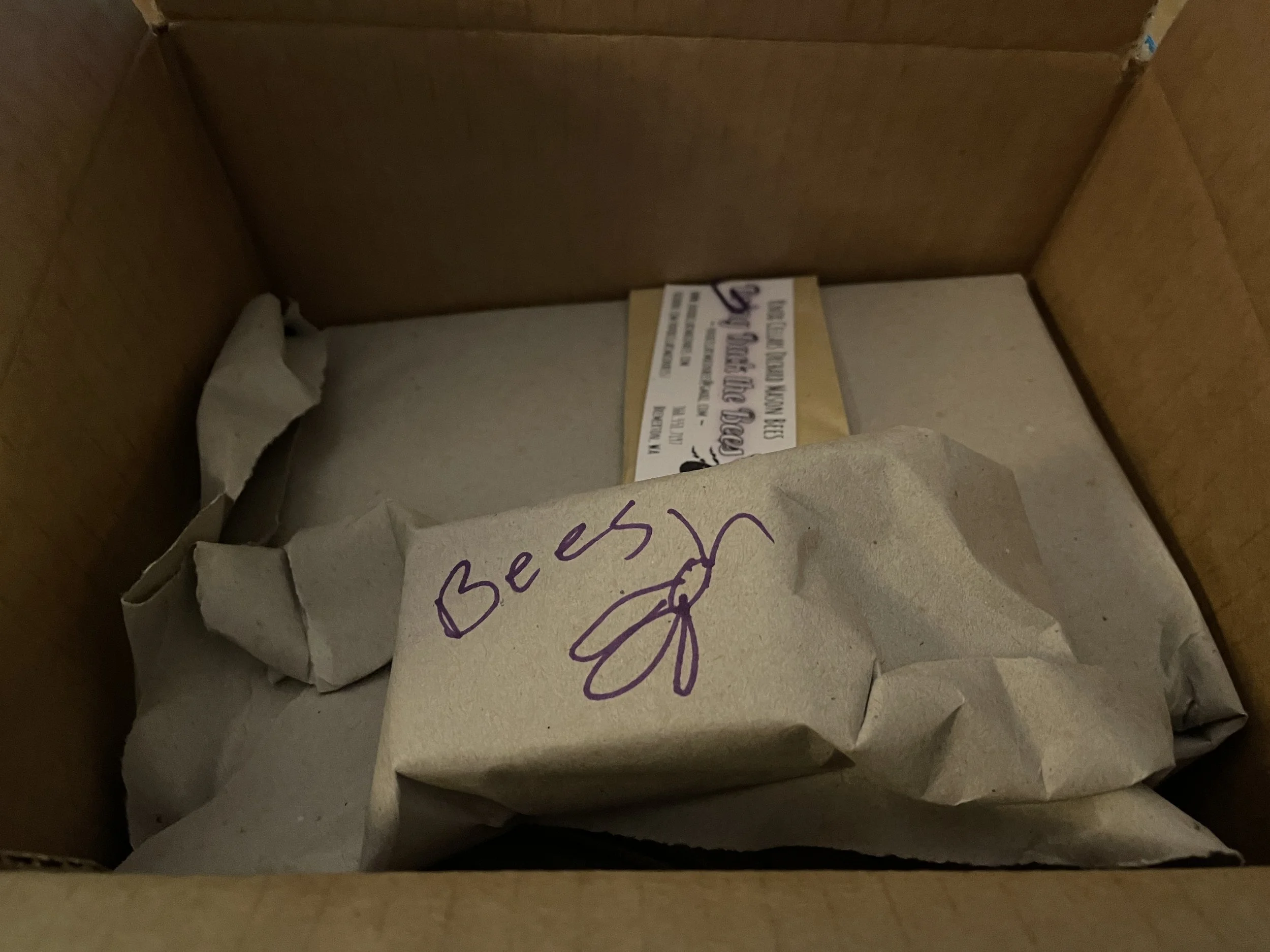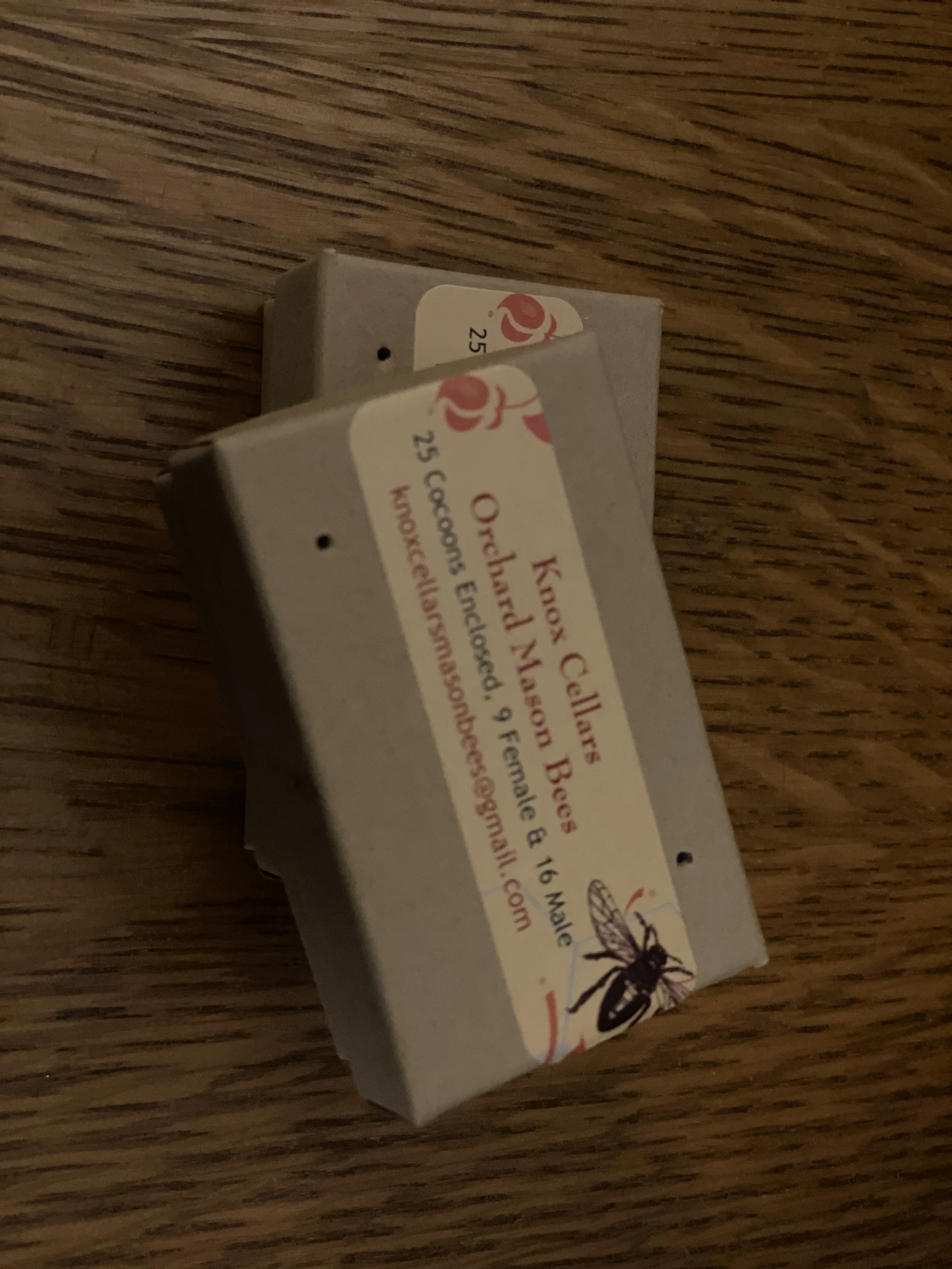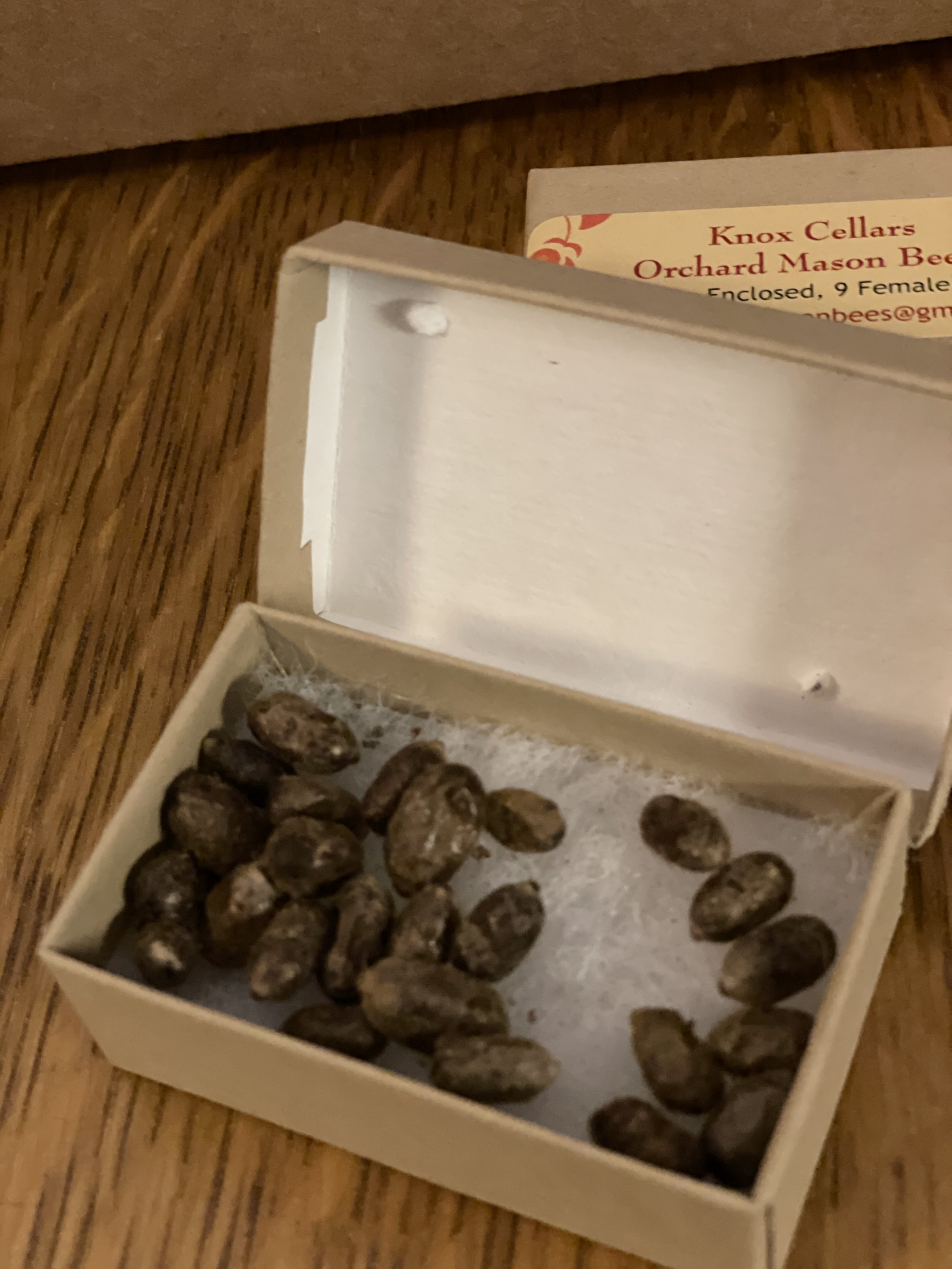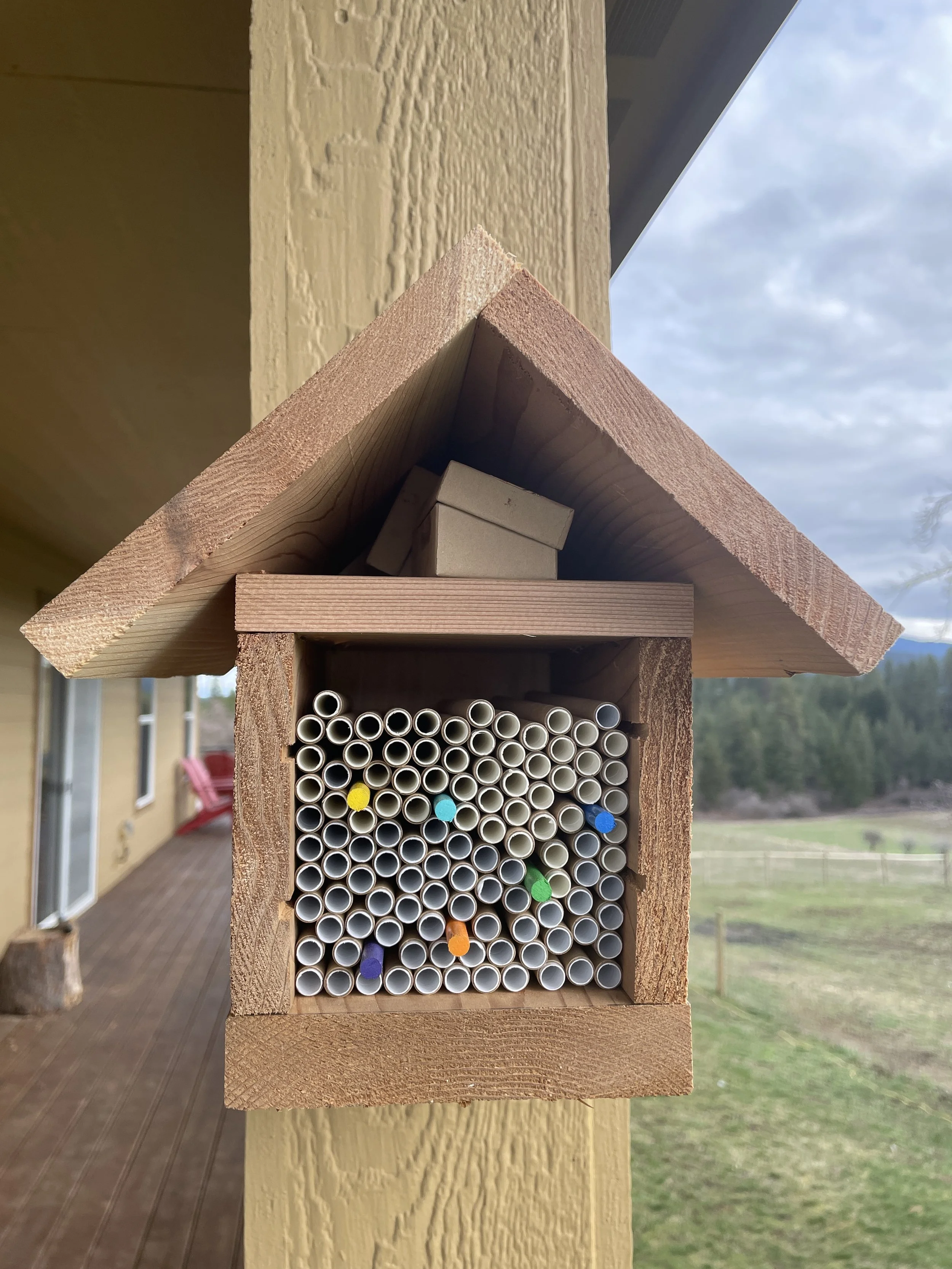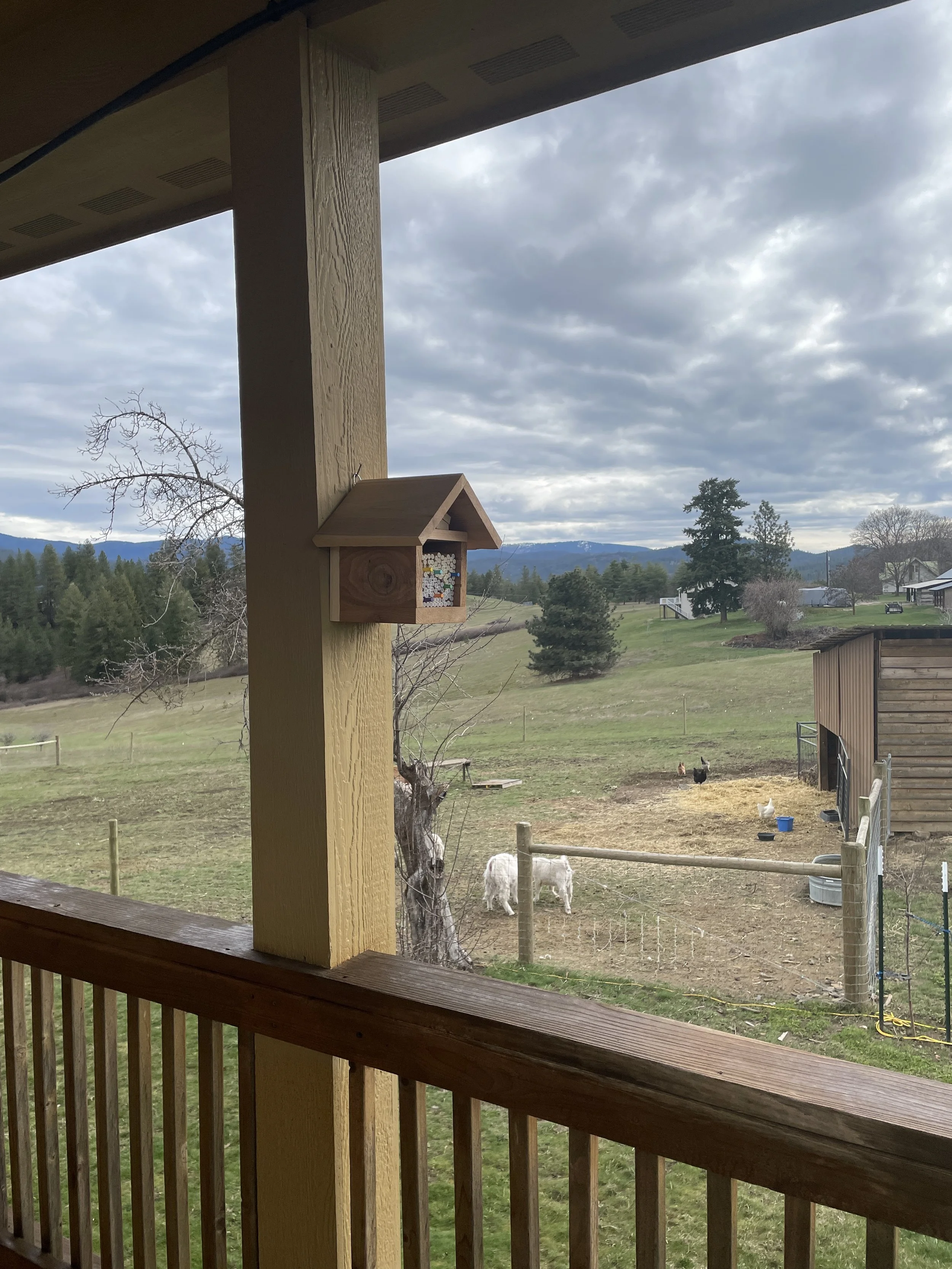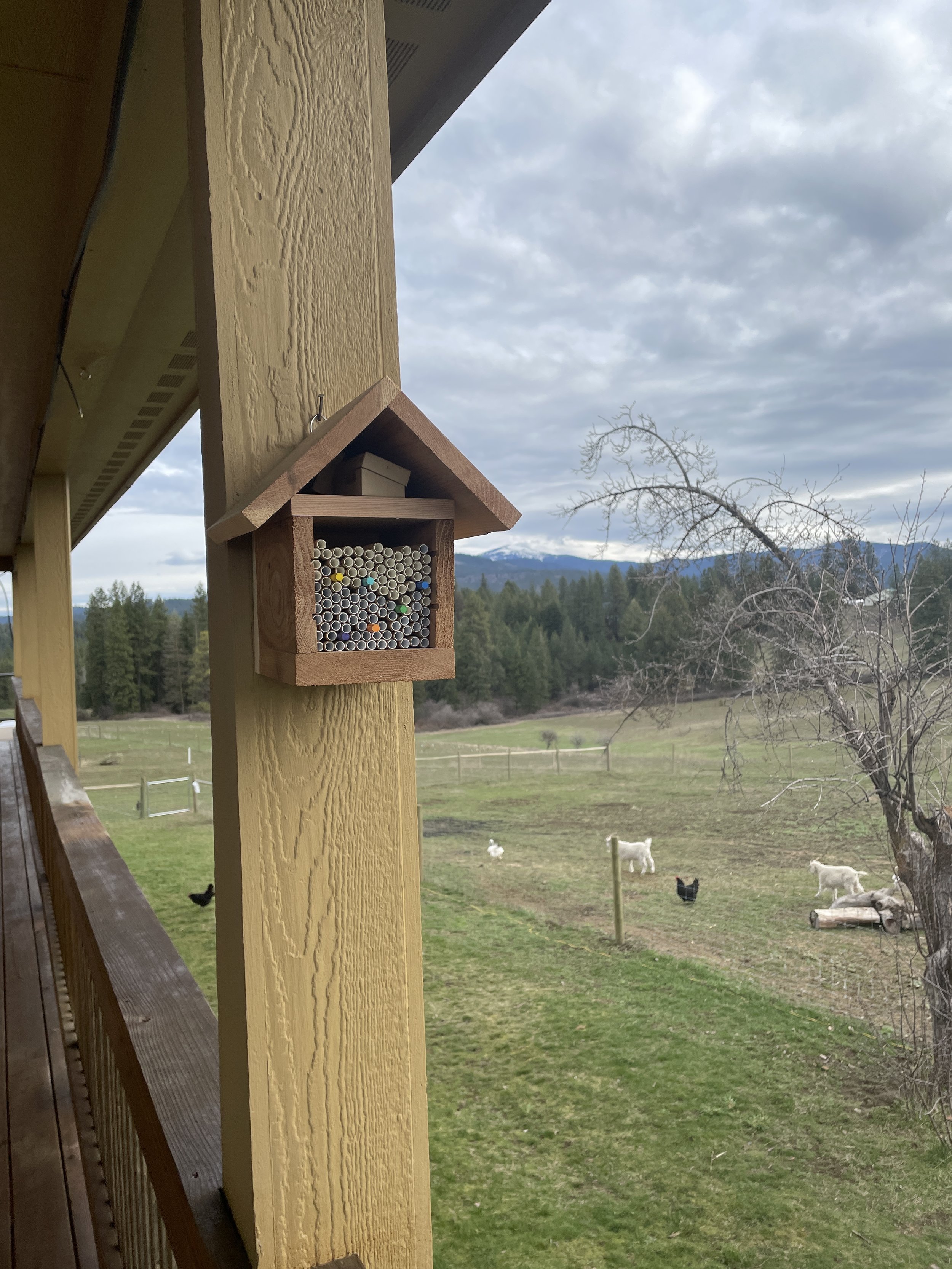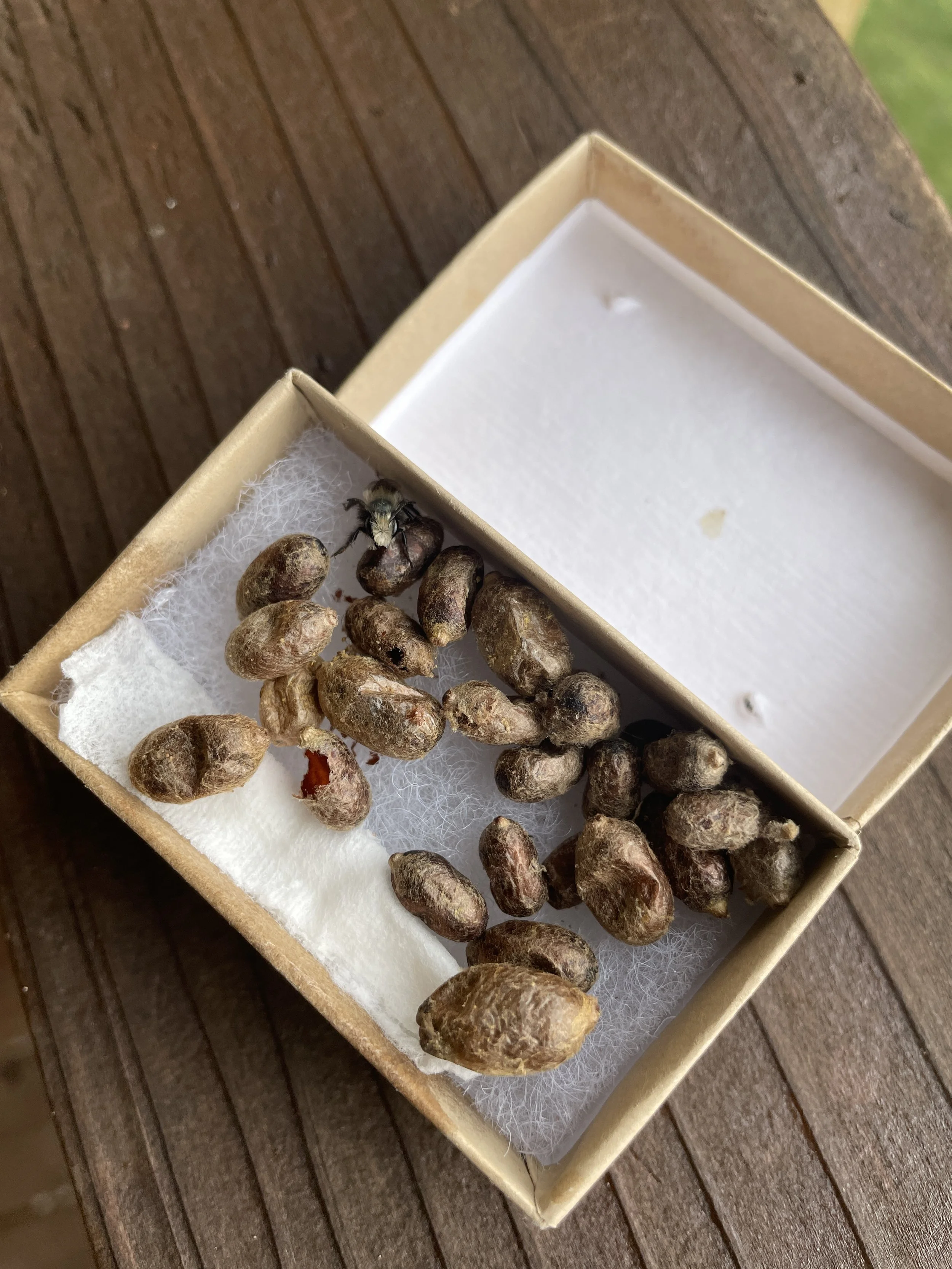A new type of beekeeping: Mason bees!
I recently learned about a completely different type of pollinating bee that you can attract/raise - mason bees. Mason bees are in the category of “solitary” bees. Unlike honey bees, mason bees are not part of a colony or collective; they do not work in concert with others in their hive to bring in nectar and pollen and produce honey. Instead, mason bees do their pollinating work alone, though they make their home in a “condo”-style bee house.
Mason bees start as coccoons which are dormant all fall and winter. To start mason bees the first season, you can order coccoons through the internet (of course!) What arrives in the mail are two tiny little boxes of coccoons:
You pop those into the refrigerator until the weather warms up a bit, keeping a little cup of water nearby to maintain humidity.
Mason bee houses do not need to be anything fancy - you just need to have 5/16” diameter tubes (about 6” deep”) into which solitary bees will “mud” in little “rooms” deep where they lay their eggs and then mud them closed and repeat. So inside each tube will be little mudded compartments that will eventually produce next year’s coccoons. In the meantime, between all of the mudding/egg-laying, the mason bees are pollinating nearby plants, a very good thing.
Mason bees do all of this between April and June. Then the tubes just sit and wait as the coccoons form/establish and wait until next spring. The mason beekeeper has to remove/protect the tubes and then open them up to separate coccoons from mud, and then store the coccoons safely for the spring.
So mason bee houses are simply collections of these little tubes. My nearby friend, Robin (who purchased Lillian and Trixie!), made this particular mason bee house. The tubes are a heavy cardboard (again, of that perfect size, bees are oddly particular about that). Within each cardboard tube is a lighter paper liner. Using a liner (allegedly) makes it easier to get the contents of each tube out at the end of the season (you push/pull the liner out and then slice it open to separate the coccoons.)
The colorful sticks are just a little fun add-on - to help the bees identify which tube “condo” is theirs. I will also cut a few branches to stick in there as well for the same reason.
So, another Great Experiment underway! Much simpler than honey beekeeping, for sure, so a great complement to that somewhat complicated hobby. And no matter what we experience from this new foray, bees remain one of the most fascinating things I have ever learned about living in the country all of these years.
One of the coccoons had already hatched when I pulled them from the refrigerator!

